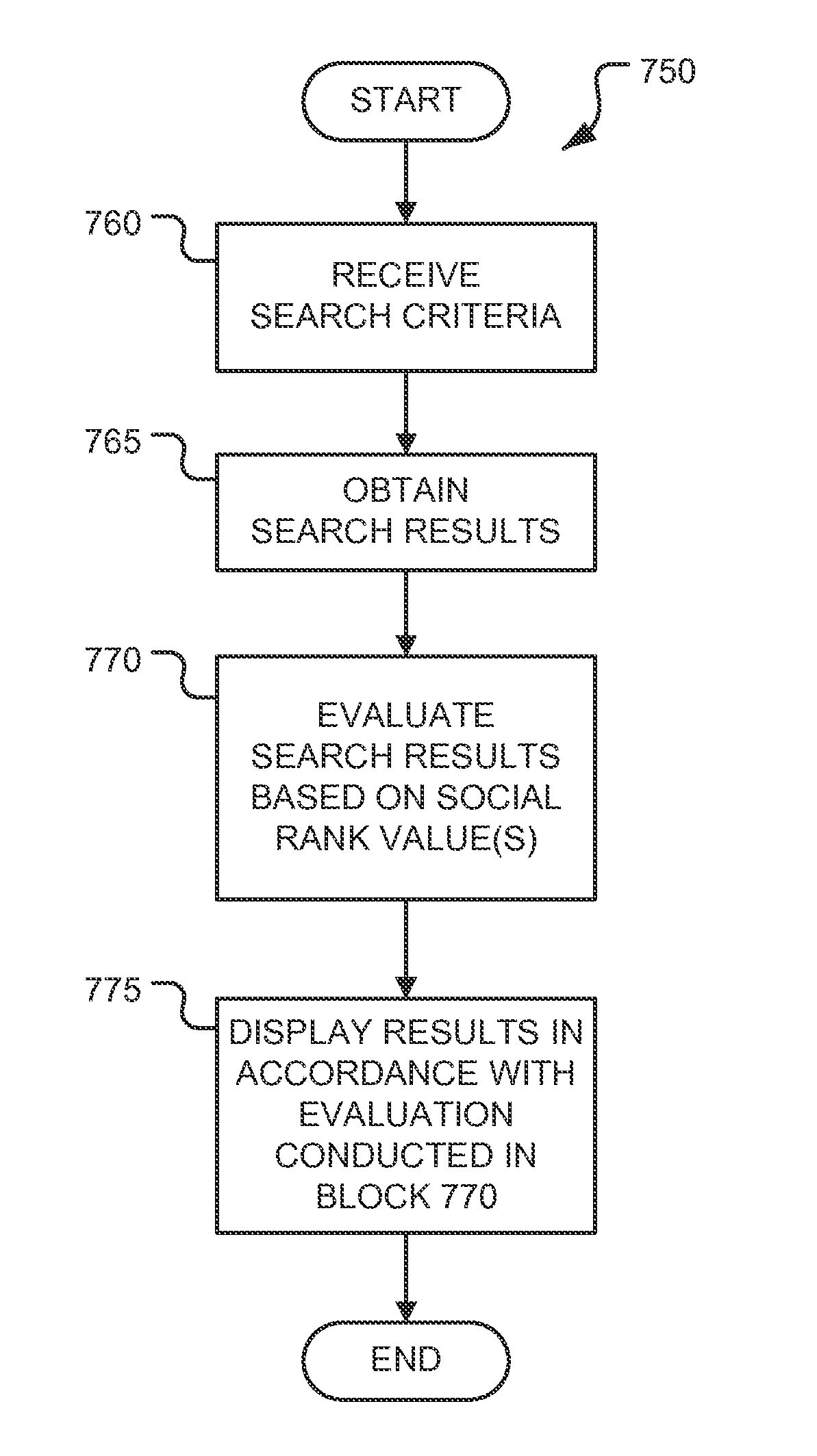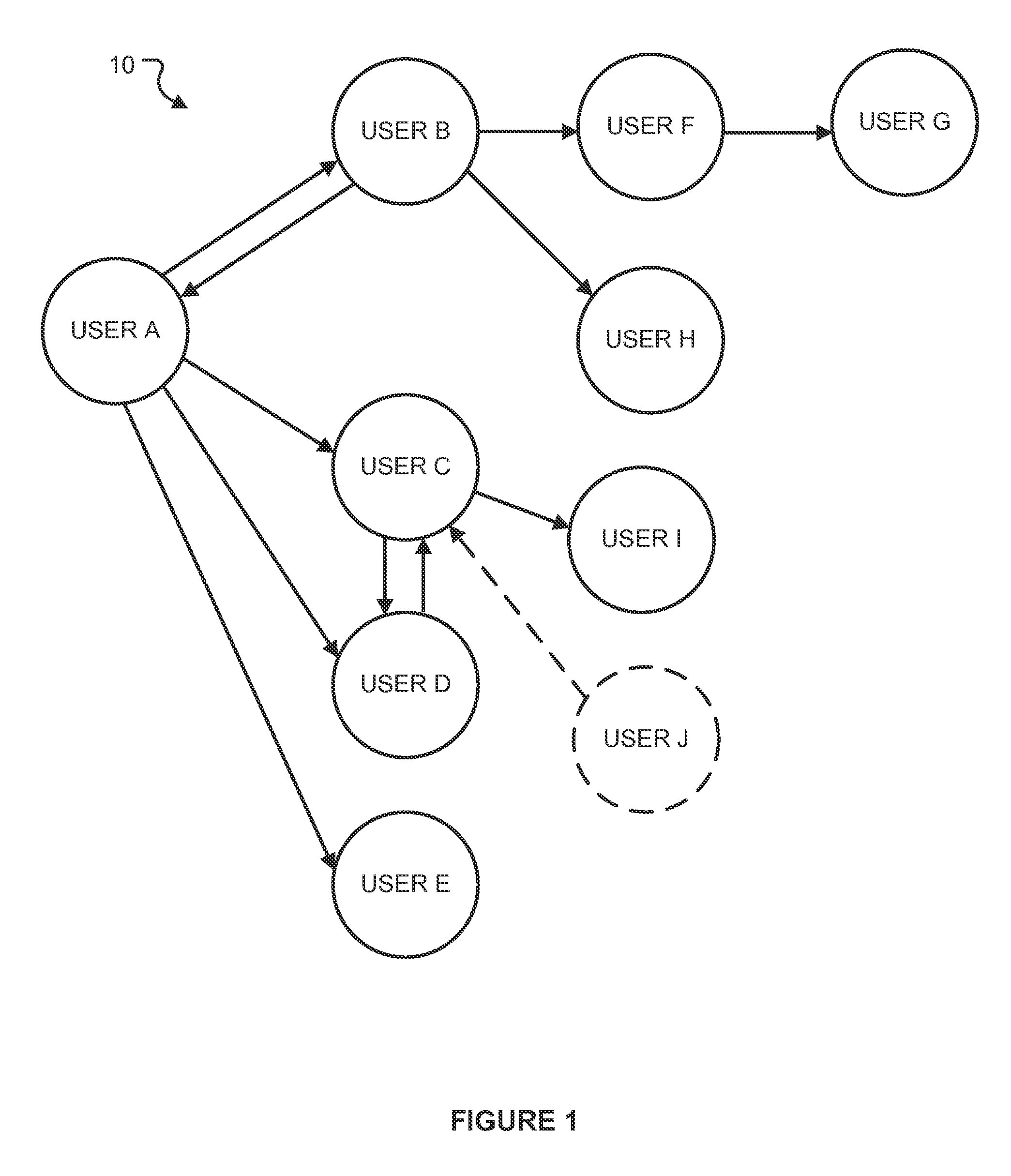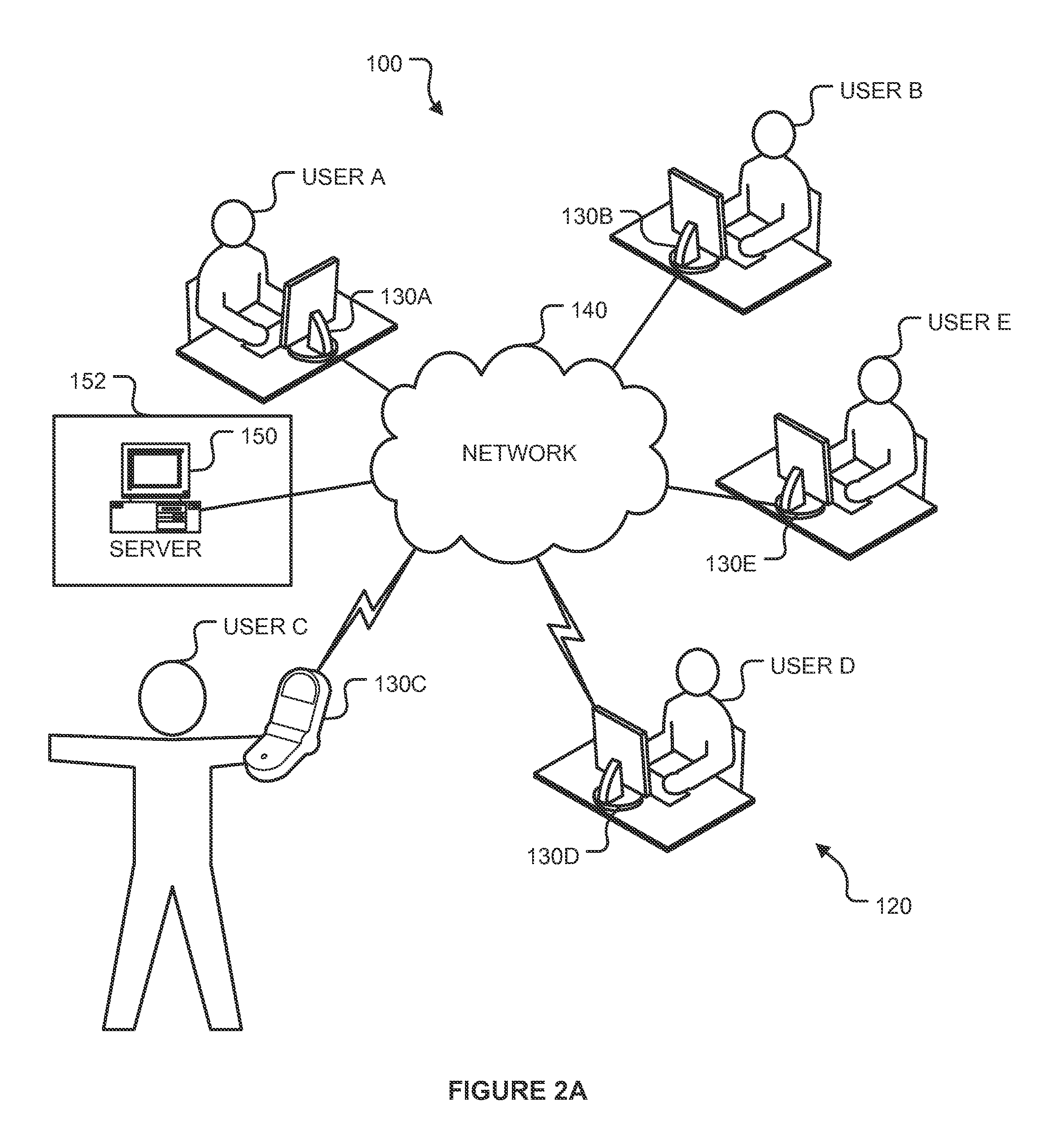Method for social search
a social search and social search technology, applied in the field of social search, can solve the problems of not returning particularly relevant search results or ordering them in a particularly useful way, and none of the currently available technologies provide truly relevant search, etc., and achieve the effect of increasing the social rank valu
- Summary
- Abstract
- Description
- Claims
- Application Information
AI Technical Summary
Benefits of technology
Problems solved by technology
Method used
Image
Examples
Embodiment Construction
System Overview
[0060]Referring to FIG. 2A, embodiments will be described below with respect to a system 100 operated at least in part by a plurality of users 120. For illustrative purposes, the system 100 will be described with respect to the social graph 10 associated with the User A. Thus, by way of an illustrative and non-limiting example, the plurality of users 120 may include the Users A-J. However, only the Users A-E have been illustrated in FIG. 2A. Each of the plurality of users 120 operates at least one computing device. In the example illustrated, the Users A-E operate computing devices 130A-130E, respectively. In the system 100, the computing devices 130A-130E are connected to one another by a network 140.
[0061]Each of the plurality of users 120 may be an individual or other type of entity (e.g., a company, non-profit organization, institution, and the like). For example, one or more of the Users A-E may be a service provider, such as a news organization.
[0062]The system ...
PUM
 Login to View More
Login to View More Abstract
Description
Claims
Application Information
 Login to View More
Login to View More - R&D
- Intellectual Property
- Life Sciences
- Materials
- Tech Scout
- Unparalleled Data Quality
- Higher Quality Content
- 60% Fewer Hallucinations
Browse by: Latest US Patents, China's latest patents, Technical Efficacy Thesaurus, Application Domain, Technology Topic, Popular Technical Reports.
© 2025 PatSnap. All rights reserved.Legal|Privacy policy|Modern Slavery Act Transparency Statement|Sitemap|About US| Contact US: help@patsnap.com



